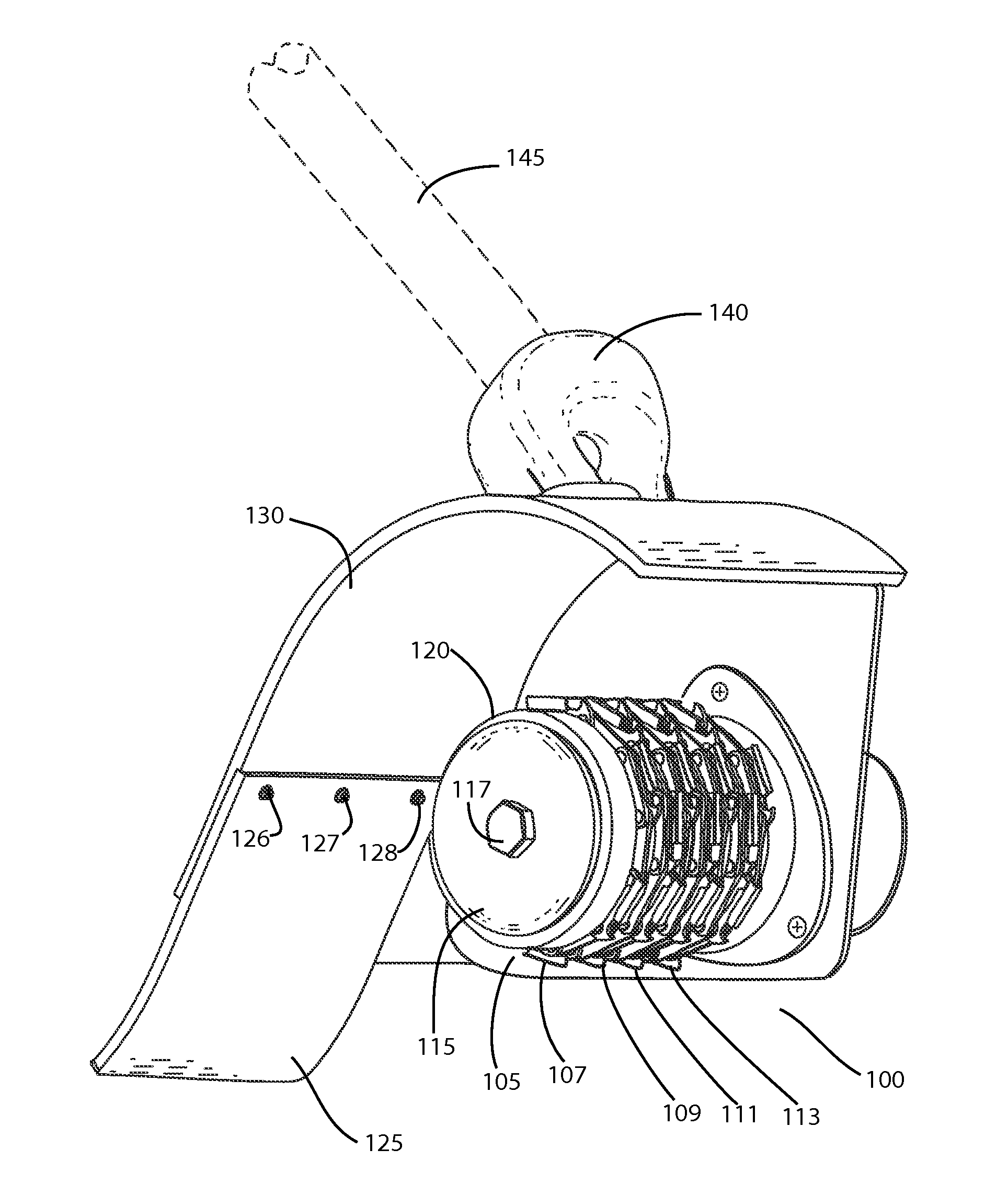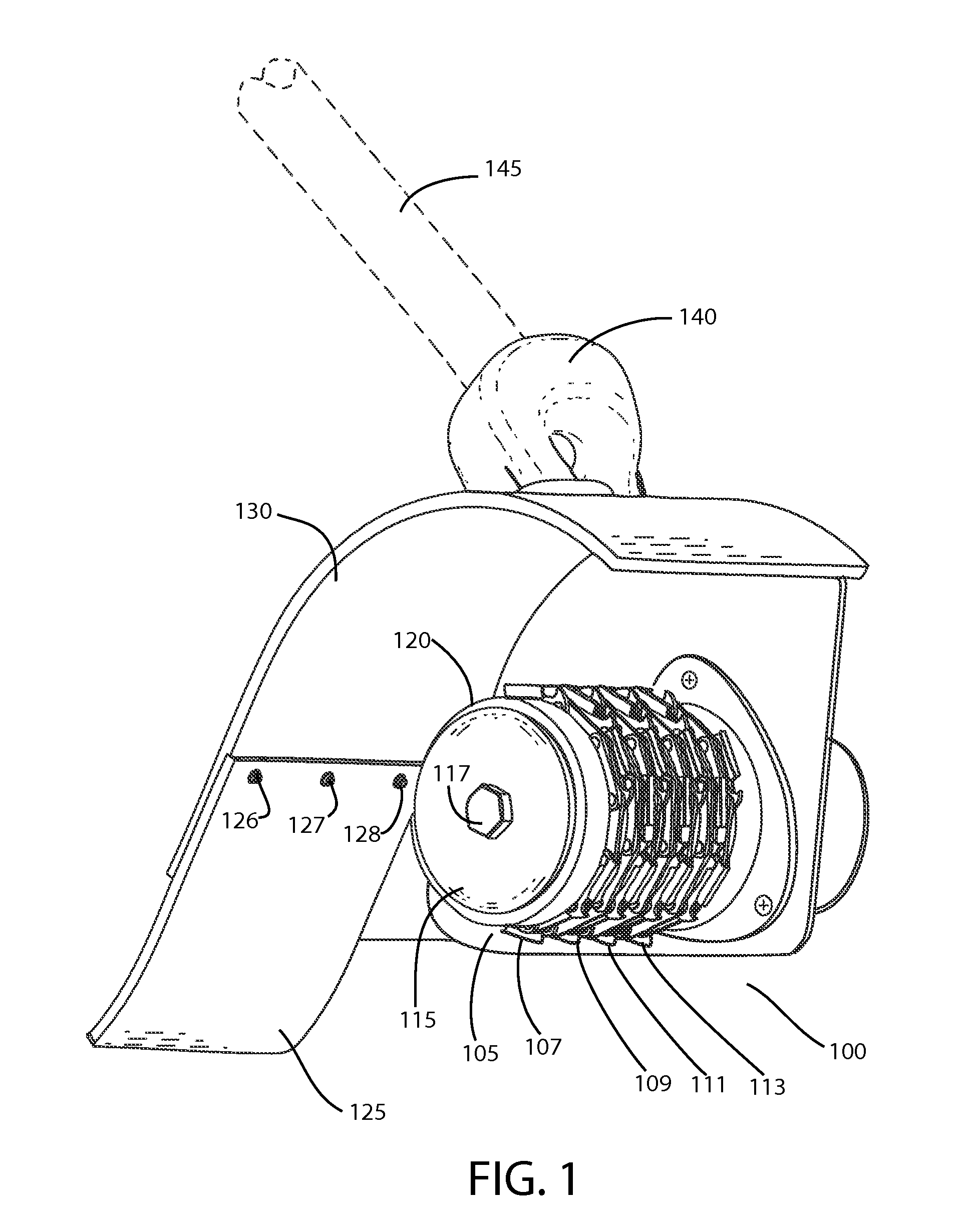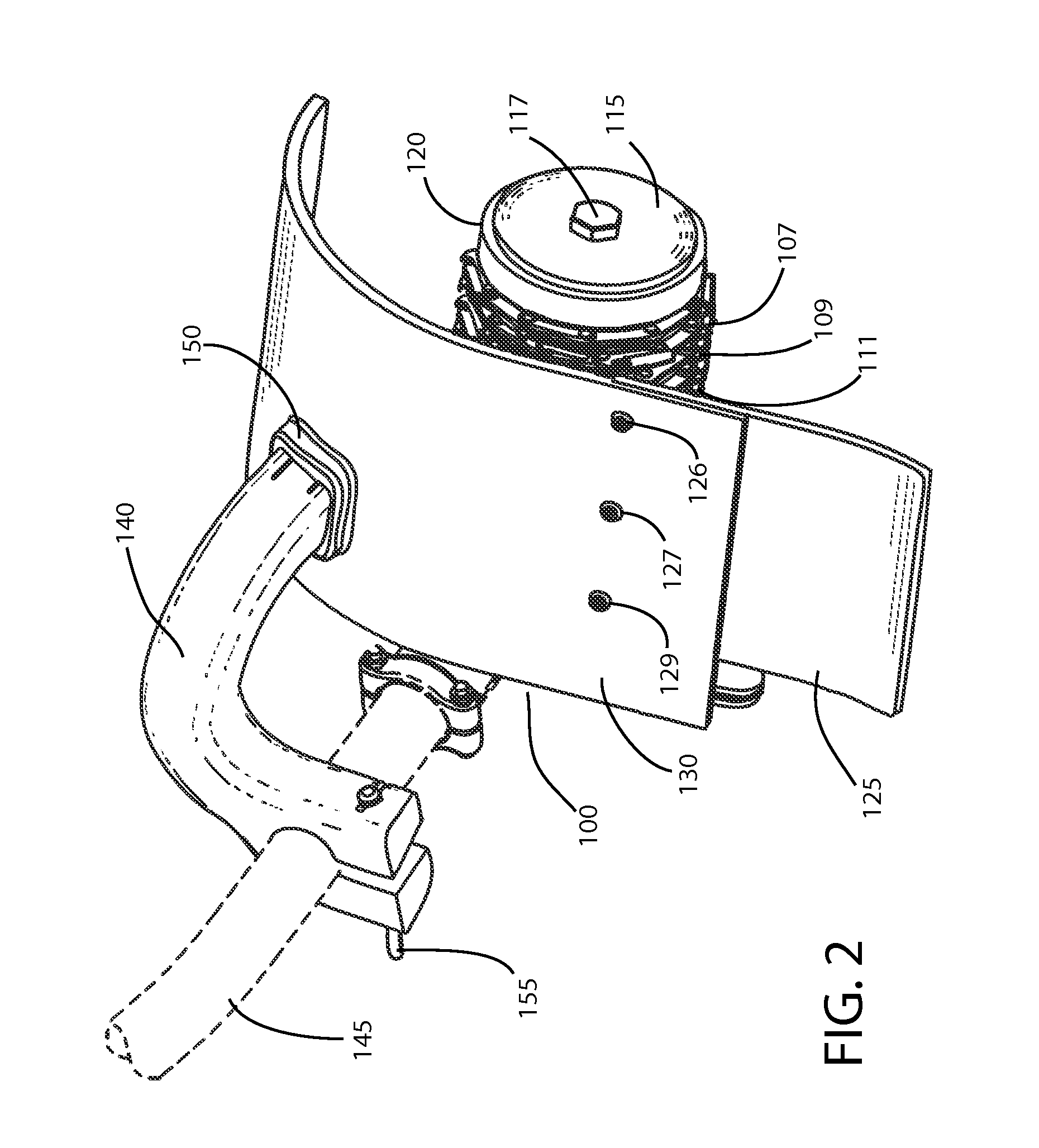Root resurfacing attachment for hand held gas powered edgers
a technology of root resurfacing and gasoline power, which is applied in the field of land-scaping, can solve the problems of affecting the efficiency of equipment grinding, and affecting the operation of equipment, so as to achieve the effect of efficient grinding of exposed roots
- Summary
- Abstract
- Description
- Claims
- Application Information
AI Technical Summary
Benefits of technology
Problems solved by technology
Method used
Image
Examples
Embodiment Construction
[0043]Referring to FIG. 1, a perspective view of an exemplary assembled root resurfacing attachment according to principles of the invention is provided. Shaft 145 comprises a part of a gasoline powered landscaping edger, such as, for example, the exemplary edger shown in FIG. 22. An engine 710 causes a cable or drive shaft that extends through the shaft 145 to rotate. Rotation of the cable or drive shaft powers a gear box or transmission 101, which causes a spindle 102 (FIG. 3) to rotate. Rotation of the spindle 102 typically drives a rotating blade used to edge a lawn. However, in accordance with the invention, the blade is removed from the spindle 102. A root resurfacing attachment according to principles of the invention is attached to the spindle 102, as discussed below.
[0044]A root resurfacing attachment 100 according to principles of the invention comprises a plurality of parallel spaced apart chainsaw chains 107-113 (hereinafter “cutting chains” or “chains”) mounted on a uni...
PUM
| Property | Measurement | Unit |
|---|---|---|
| outer diameter | aaaaa | aaaaa |
| inner diameter | aaaaa | aaaaa |
| width | aaaaa | aaaaa |
Abstract
Description
Claims
Application Information
 Login to View More
Login to View More - R&D
- Intellectual Property
- Life Sciences
- Materials
- Tech Scout
- Unparalleled Data Quality
- Higher Quality Content
- 60% Fewer Hallucinations
Browse by: Latest US Patents, China's latest patents, Technical Efficacy Thesaurus, Application Domain, Technology Topic, Popular Technical Reports.
© 2025 PatSnap. All rights reserved.Legal|Privacy policy|Modern Slavery Act Transparency Statement|Sitemap|About US| Contact US: help@patsnap.com



